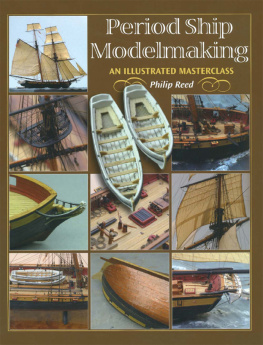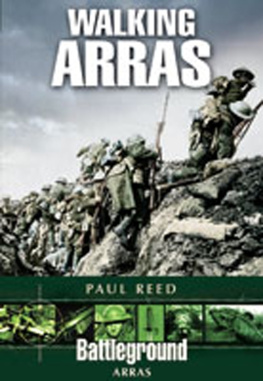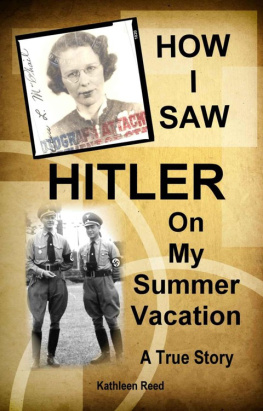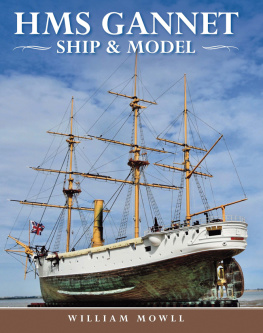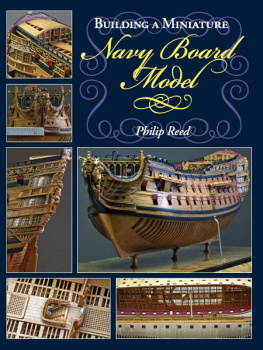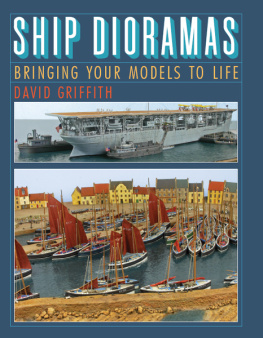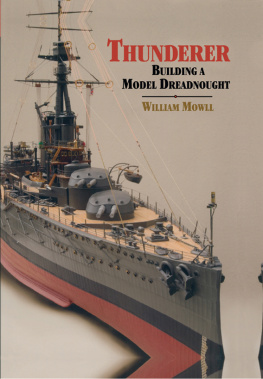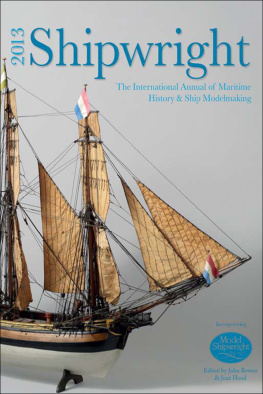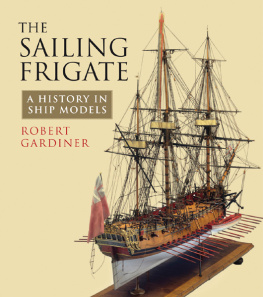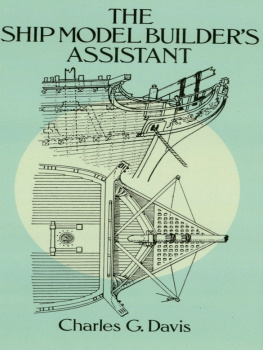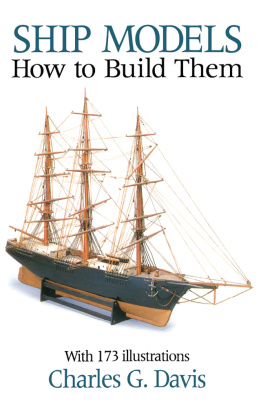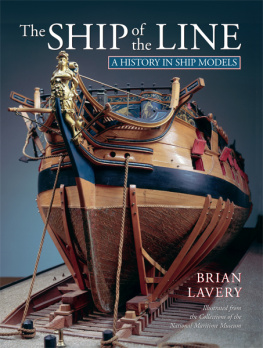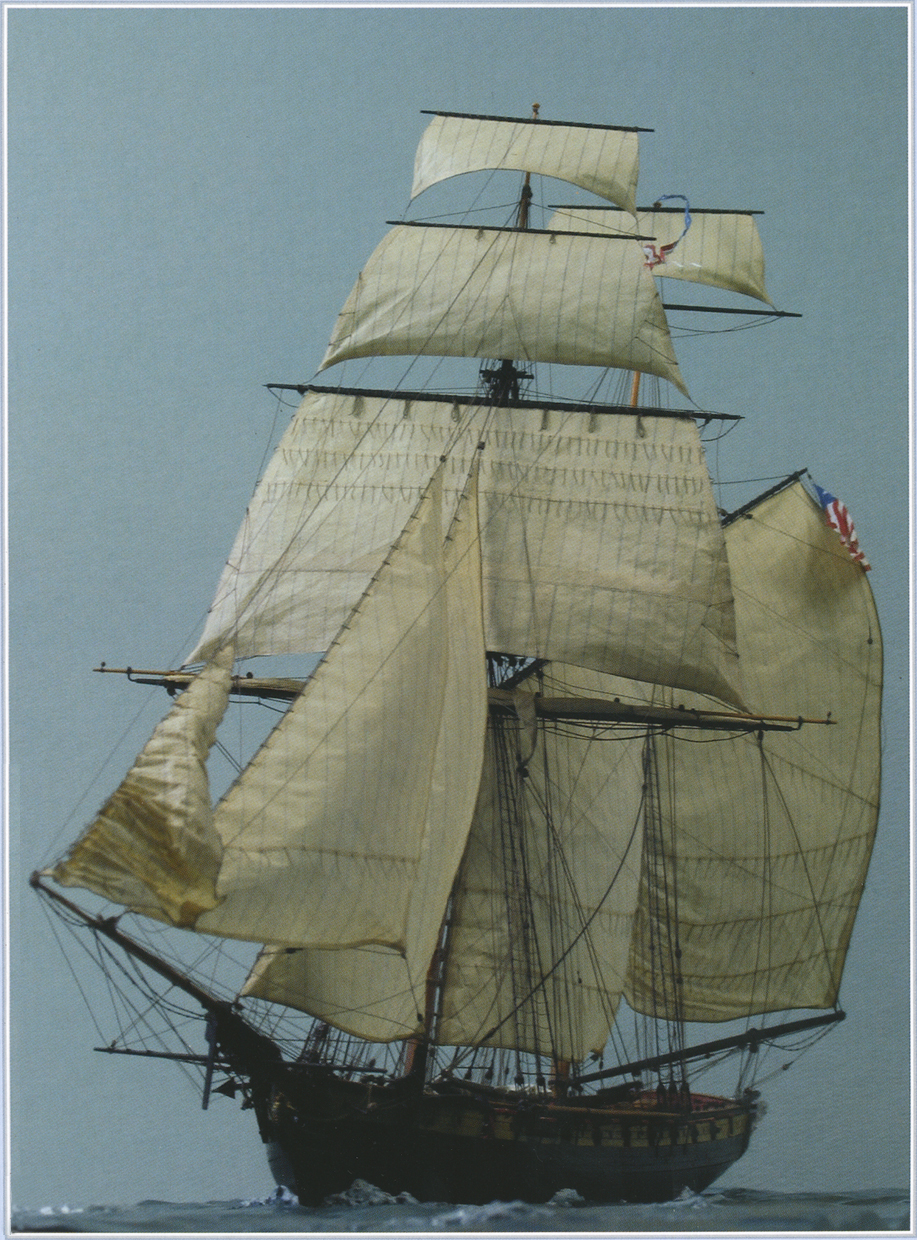In my previous book there was a final section of photographs of the finished model along with a separate colour section, either to view separately or refer to as reference whilst building a model. In this volume the photographs of the finished model have been dispersed throughout the text, as far as possible to illustrate areas of the model being covered at that point. They are easily distinguished from the text photographs by the linear border around them. A selection of further models, good examples of small craft, are displayed at the end of the book.
S everal years ago I built a model of the 74-gun ship Majestic, and at the time of building took numerous photographs, captioning each, and finally presenting them in book form as Modelling Sailing Men-of-War. The aim was to take the reader step-by-step through the process of building the model and I hoped that the book might be of general interest to period ship modelers while offering detailed advice to those wanting to build a model of a similar subject.
In the Introduction I explained that many of the methods outlined in the book could be equally well adapted to my more usual scale of 1/192 (16ft to the inch), and certainly could be modified for building a smaller and simpler vessel, which might appeal to the less experienced modeller. However, I must admit that, if I were now where I was thirty years ago, I might find the wealth of complex detail on a 74-gun ship somewhat daunting and the process of extracting and utilising the relevant information really quite difficult.
This all came to mind recently when I was commissioned to build two 1/192 models of the Prince de Neufchatel, the American schooner-rigged privateer. One was to be full-hulled and coppered with bare spars and displayed on a cradle, and the other a waterline model under full sail, set off against a carved sea. It occurred to me that I could produce a second book that could stand alone as a guide to building a small and rather simpler flush-decked vessel, or could be used in conjunction with the first book as a more general manual for those interested in this subject of miniature modelling. The advent of digital photography made the task all the easier as I was able to take photographs and prepare captions simultaneously, as each stage of the job was completed.
In a number of photographs a ruler has been included which is not just to give an idea of scale but to help the reader understand that the finished model looks quite different from the impression given by many of the close-up photographs, which might suggest that some of the detailing is a little crude. The distinguished ship modeller Donald McNarry believed that miniature models should never be portrayed at a larger size than the models themselves, and I tend to agree with him. Doing so rarely shows off to advantage any virtues the model may possess but magnifies the tiniest of blemishes and faults. It is, however, something that I have resorted to repeatedly in these pages in order to show better the methods used to build them.
A small flush-decked vessel, fore-and-aft rigged, such as a schooner or cutter, presents the miniature model builder with one of the simpler prototypes, both in terms of hull construction and rigging. There is no need to hollow out and detail below decks except, that is, immediately below any open companion way or hatch, and that is optional. The actual hull shape itself is certainly a lot less complex than that of many larger vessels with their tumblehome, wales, rows of gun ports and often extensive decoration at the bows and sterns. These simpler craft are an ideal choice for anyone new to the discipline.
I have built several other small models to the same scale of 1/192. Three of them are American vessels, Lynx, America and Washington though the former was captured and taken into the Royal Navy and renamed Musquidobit and two were British, the cutter Surly and the brig Grasshopper. I have included these vessels in the book, showing them as finished models, to give the reader a better idea of the variety of ship types to be tackled. The core of the book depicts the building of the two models of the Prince de Neufchatel herself, and between them they demonstrate just about all of the techniques used to build these other models.
* * *
The American privateer schooner Prince de Neufchatel was built by the Brown brothers of New York in 1813. She was one of a new class of large, fast and seaworthy schooners that first made their appearance during the War of 1812. She had a short but notoriously successful career that earned her a permanent place in her nations history.
On her completion she was sent to Cherbourg, France, under the command of her captain, J Ordronaux. In March 1814 she put to sea and captured nine prizes in the English Channel, and for the rest of that summer she created havoc amongst enemy shipping. Seventeen times during this period she was pursued by British men-of-war but always managed to evade capture due to her speed and sailing qualities. In September she returned to Boston for a short refit.
Just one week into October found the Neufchatel at sea again, already in company with a new English prize, when she was spotted, becalmed, by the British Frigate Endymion. The Endymion was unable to get alongside before darkness fell, so she sent in five of her boats carrying between 111 and 120 men to cut out the schooner. Although the Neufchatels small crew numbered only forty they managed to fight off their attackers after a very bloody twenty minutes, with, however, great loss of life on both sides. The Neufchatel then managed to make her escape along with her prize and return to Boston.
On 21 December the Neufchatel was at sea once again, but just five days later she was sighted by the British frigates Newcastle, Leander and Acasta. After a long days chase she was finally captured, but only because she lost some of her spars, damaged under too great a press of sail. After her capture she was sent back to England, and would have been taken into the Royal Navy were it not for an accident in dry dock when she broke her back on the sill of the gates. She was broken up in 1815. Displayed as a model some two hundred years later, her slender lines and the elegant rake of her masts conjure up for another generation those wild chases across the open seas.

